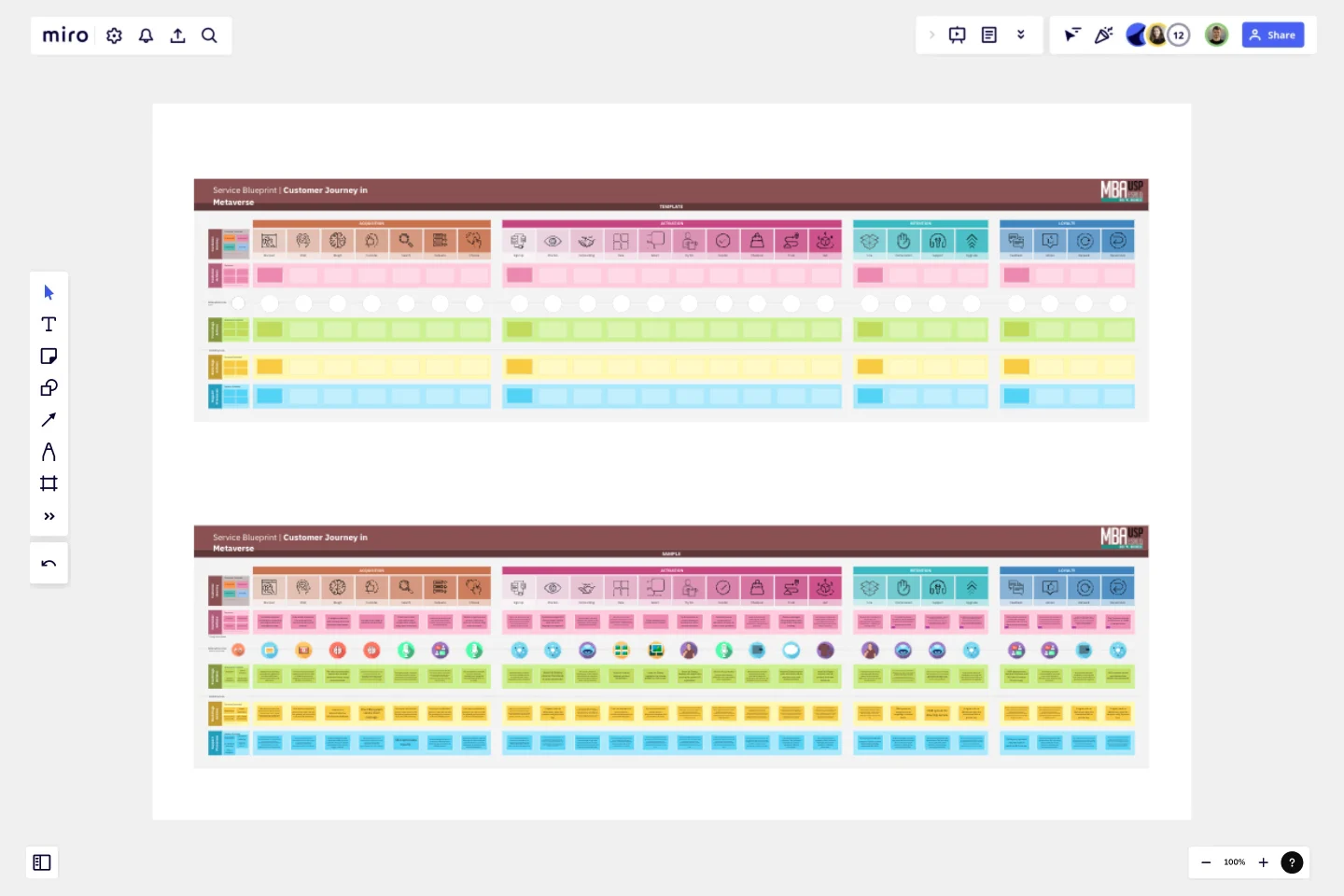Service Blueprint to the Metaverse
We live in reality increasingly adapted to digital technologies and environments.
From social interactions to entertainment, from banking to online shopping, almost everything can be done through internet-connected devices. As technologies evolve, they enable faster, safer, and more natural interactions for users.
We experience a relevant cultural movement where the real and virtual worlds converge from screens of “smart” devices, driving the emergence of the term Metaverse as an ongoing evolution of digital environments and interfaces. In this scenario, in addition to the technological challenges, there is a need to build proposals, models, and frameworks that enable meaningful, fluid, interoperable experiences capable of generating value for real or digital users and businesses. Furthermore, the evolution of the internet to Web 3 brings important disruptions in paradigms of access, ownership, and commercial relationships, empowering individuals and enabling new business models and value chains.
This template proposes, from a service blueprint, the mapping of the customer journey of real or virtual products carried out in the metaverse and considers both customer interaction and the organization's service and support actions, serving as an editable, adaptable, and open template that will enable the structuring of new businesses in the metaverse, considering its peculiarities and challenges, serving as a business model that is desirable as an experience, sustainable as a business and technologically viable.
This template was created by Alvaro Gabriele.
Get started with this template right now.
Newsletter Template
Works best for:
Design, Marketing, Desk Research
Using a newsletter template allows you to create a structured and eye-catching newsletter for your subscribers. Add images, text, a call-to-action, and anything else that’ll keep your audience engaged. Take a look at Miro’s newsletter template to start creating unique and distinctive emails today.
Empathy Map Canvas by Sampriti Jain
Works best for:
Market Research, Strategy & Planning
The Empathy Map Canvas template allows you to explore user behaviors and emotions comprehensively. It’s designed to help you visualize user experiences and create solutions that truly meet their needs. Perfect for UX teams and product developers.
Empathy Map for Food Ordering App
Empathy Map template aids in visualizing your users' experiences. It helps teams understand what users see, think, and feel, ensuring your product meets their needs. This tool is essential for building empathy and designing better user experiences.
Stakeholder Analysis Template
Works best for:
Design
When designing new solutions, thinking about what people need is important. Before deciding or defining the problem, ask questions like: Who is involved? What do they care about? How much power do they have? Understanding how your work affects everyone involved is crucial. Stakeholder analysis helps you plan and might change how you see the problem.
Darts Template
Works best for:
Design
It is a common mistake to assume that all ideas, tasks, or features are equally important. However, in order to achieve the best results and focus on the most critical elements, it is necessary to determine what takes priority. This approach allows you to prioritize and concentrate on what requires immediate attention while postponing the remaining aspects for later. The Darts Template is designed to limit the amount of content that can be placed in the center, forcing your team to consider priorities before taking any action.
Design Research Template
Works best for:
UX Design, Design Thinking, Desk Research
A design research map is a grid framework showing the relationship between two key intersections in research methodologies: mindset and approach. Design research maps encourage your team or clients to develop new business strategies using generative design thinking. Originally designed by academic Liz Sanders, the framework is meant to resolve confusion or overlap between research and design methods. Whether your team is in problem-solving or problem space definition mode, using a research design template can help you consider the collective value of many unrelated practices.
